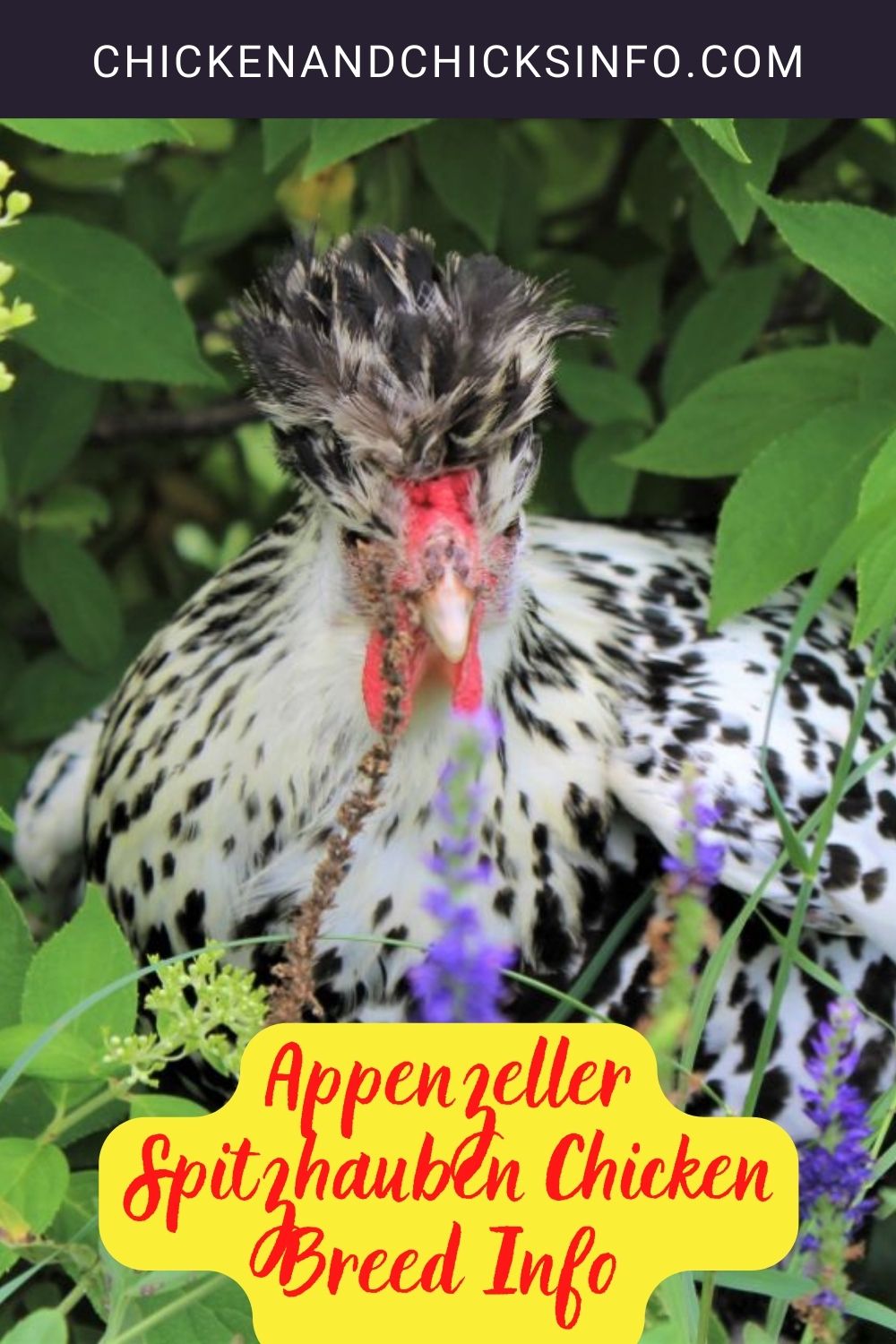The Appenzeller Spitzhauben is the national chicken of Switzerland. They are used for white egg production.
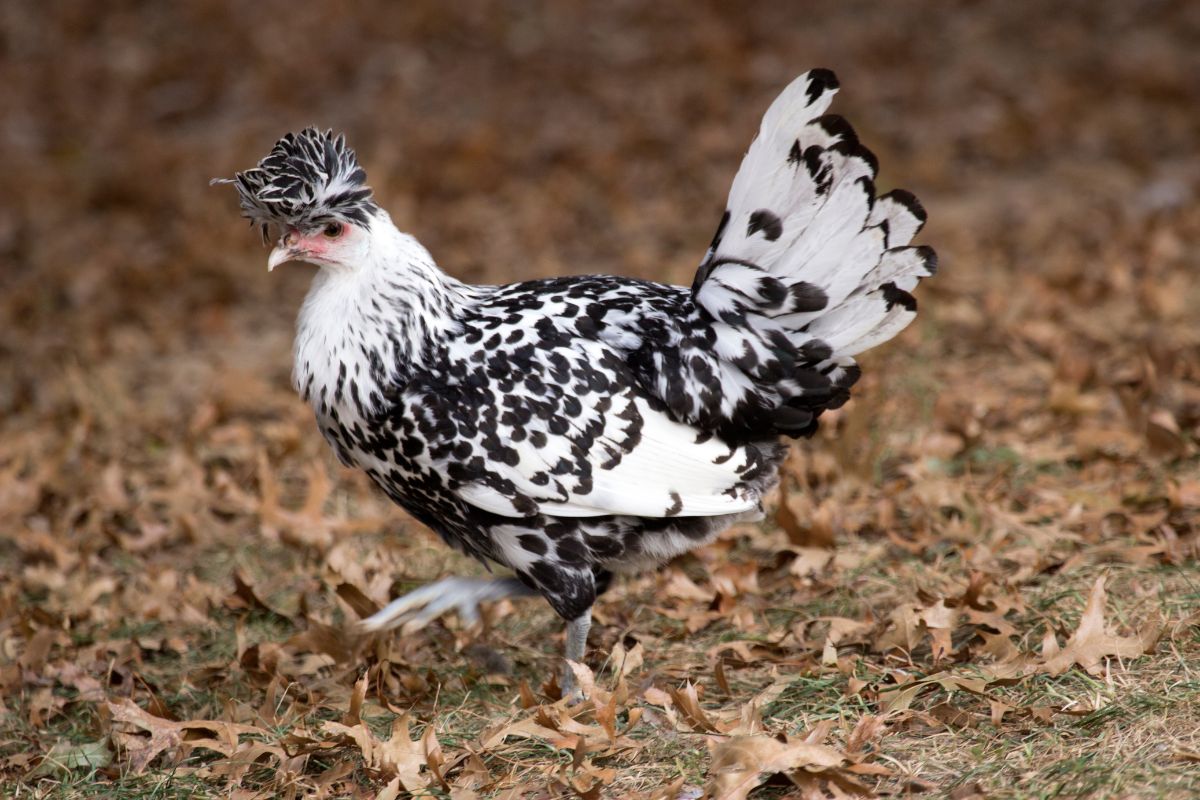
They were named after the “spitzhauben,” a ceremonial hat traditionally worn by Swiss women. Their crests stick up and point forward, resembling this type of hat.
Hens of this breed may or may not be broody. When they do go broody, they make excellent mothers.
Jump to:
- How to Buy Online Appenzeller Spitzhauben Chickens
- Appenzeller Spitzhauben Chicken Breed Quick Info
- Origins of the Appenzeller Spitzhauben Chicken
- Some Things to Know About the Appenzeller Spitzhauben Chicken
- How Easy is it to Keep Appenzeller Spitzhauben Chickens?
- Special Care and Considerations for Appenzeller Spitzhauben Chickens
How to Buy Online Appenzeller Spitzhauben Chickens

Silver Spangled Appenzeller Spitzhauben Chicks As low as: $3.90 - Read reviews
Chamois Spangled Appenzeller Spitzhauben Chicks As low as: $17.90 - Read reviews
Golden Spangled Appenzeller Spitzhauben Chicks As low as: $17.90 - Read reviews
Appenzeller Spitzhauben Chicken Breed Quick Info
Appenzeller Spitzhauben Chicken Description
| Appenzeller Spitzhauben Type/Size: | Standard |
| Feather Color: | Varies |
| Leg Type: | Clean |
| Leg Color: | Blue |
| Skin Color: | White |
| Appenzeller Spitzhauben Ease of Raising/Keeping: | Medium |
| Appenzeller Spitzhauben Special Care Needs: | No |
| Is the Appenzeller Spitzhauben breed a common, rare, or protected breed of chicken? | Rare, “threatened” status |
Appenzeller Spitzhauben Use
| Meat | No |
| Eggs | Yes |
| Dual Purpose | No |
| Appenzeller Spitzhauben Temperament: | Active, alert |
| Appenzeller Spitzhauben Ability/Likelihood to Free Range: | Yes |
Appenzeller Spitzhauben Egg Production
| Egg Color | White |
| Egg Size | Medium-Large |
| Estimated Number of Eggs Per Year | 150-180 |
| Likeliness to Brood Eggs/Raise Chicks | Medium |
Appenzeller Spitzhauben Meat Production
| Dressed Weight Male | N/A |
| Dressed Weight Female | N/A |
Appenzeller Spitzhauben Climate Tolerance
| Heat | Good |
| Cold | Good |
Appenzeller Spitzhauben Age to Maturity
| Number of Months to Reach Full Size | 5 Months |
| Number of Months to Start Egg Laying | 5 Months |
| Number of Weeks/Months to Reach Meat Harvest Size | N/A |
Appenzeller Spitzhauben Size at Maturity
| Male | 4 ½ lbs. |
| Female | 3 ½ lbs. |
Origins of the Appenzeller Spitzhauben Chicken
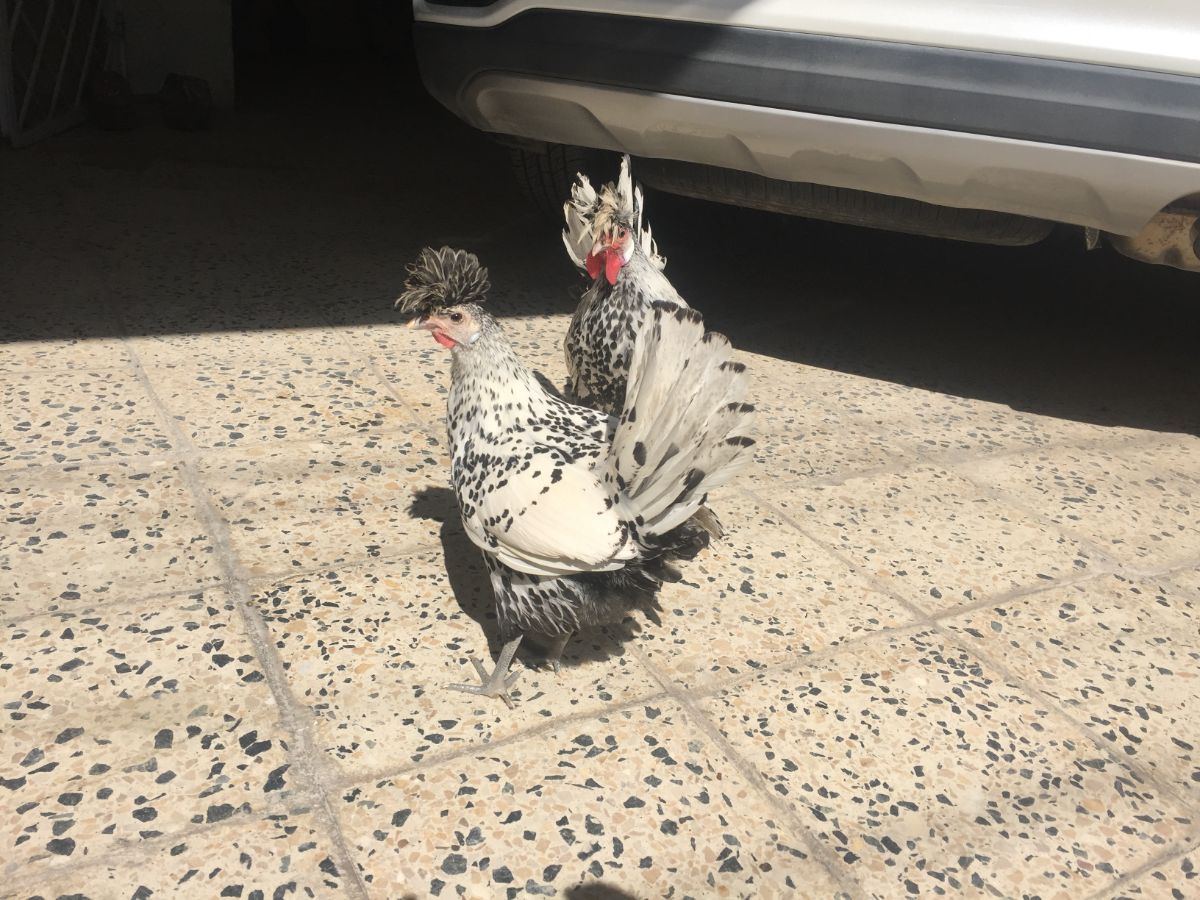
This breed originated in the Appenzell district of Switzerland in local monasteries during the 16th century.
They may not exist if it weren’t for German breeder Kurt Fischer. Following World War 2, he brought all of the original varieties to Germany in 1953 (golden spangled, silver spangled, and black) and is responsible for bringing the breed back from the brink of extinction.
The silver-spangled variety was brought to the United States in the 1950s. Today, this is the most common color.
Some Things to Know About the Appenzeller Spitzhauben Chicken
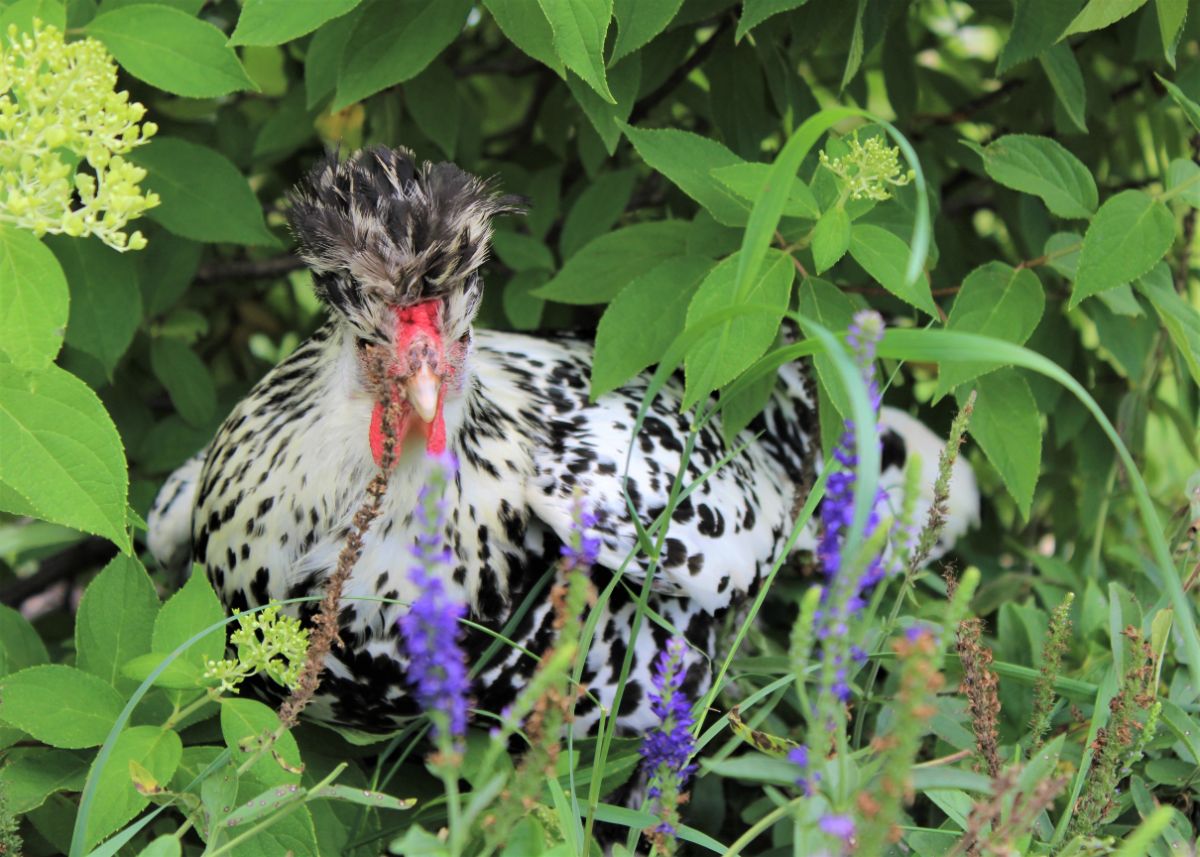
The Appenzeller Spitzhauben chicken is small, only reaching about 3 ½ - 4 ½ lbs. when fully grown.
They are characterized by their upright, forward-facing crest, which does not affect their vision. Their body should be long and rounded, with a long tail that sits at a high angle on their back.
They have a red V-shaped comb, white skin, and blue legs. You can find this breed in several varieties of plumage, including silver spangled, black, blue, golden spangled, or chamois spangled.
How Easy is it to Keep Appenzeller Spitzhauben Chickens?
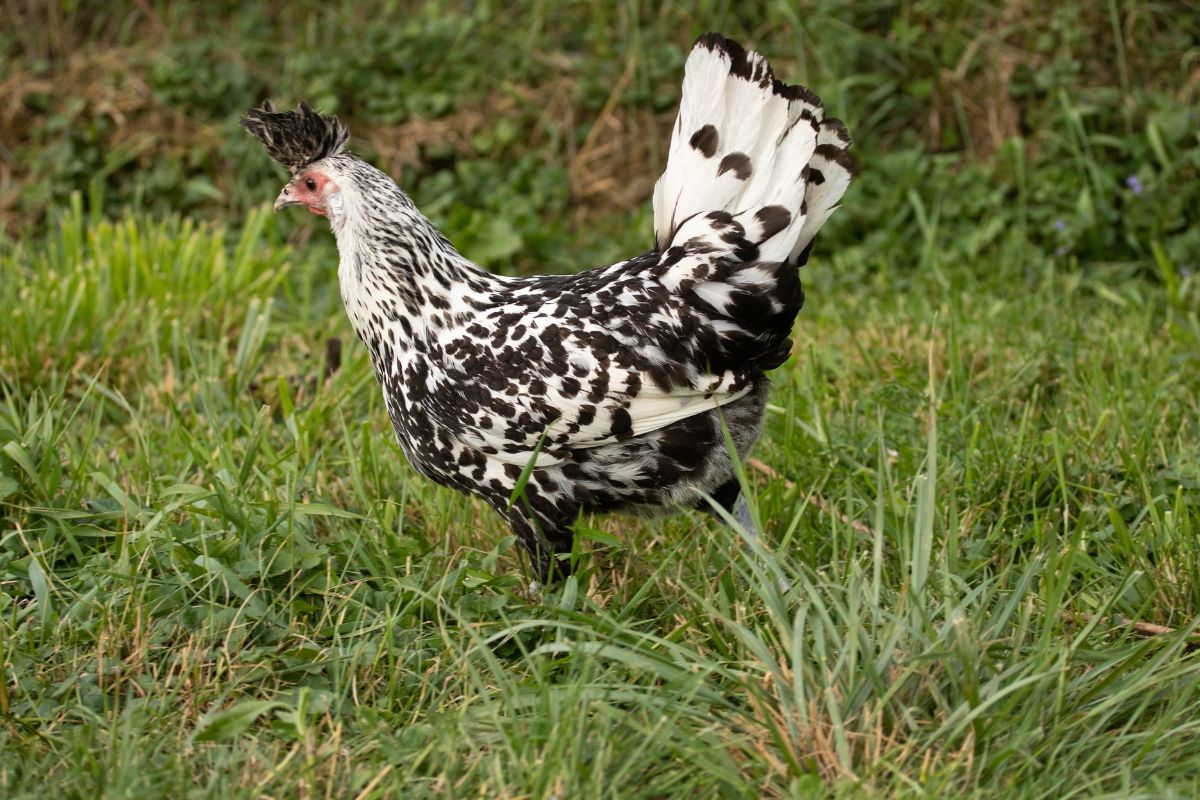
The Appenzeller Spitzhauben is an alert, active bird. Their personality is difficult to pinpoint, as it depends on the strain and individual chicken.
In general, these are not the best breed to keep as pets or for children because of their flightiness. This flighty nature also prevents them from doing well in confinement. They prefer to free-range when possible and are excellent foragers.
Be aware, though, that this breed will roost in trees if not stopped by a physical covering or trained to enter a coop every night.
Finally, these birds are tolerant of both hot and cold climates.
Special Care and Considerations for Appenzeller Spitzhauben Chickens
There are two things to be aware of when caring for Appenzeller Spitzhauben: predators and flight.
Their small size makes them more vulnerable to predation than other breeds. Since they do best in a free-range setup, be sure to take precautions against aerial predators and those on the ground.
Their small frame also allows them to fly. You can cover their run to prevent them from flying off or roosting in trees.
